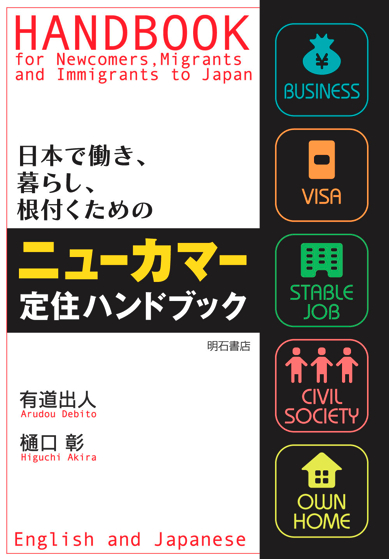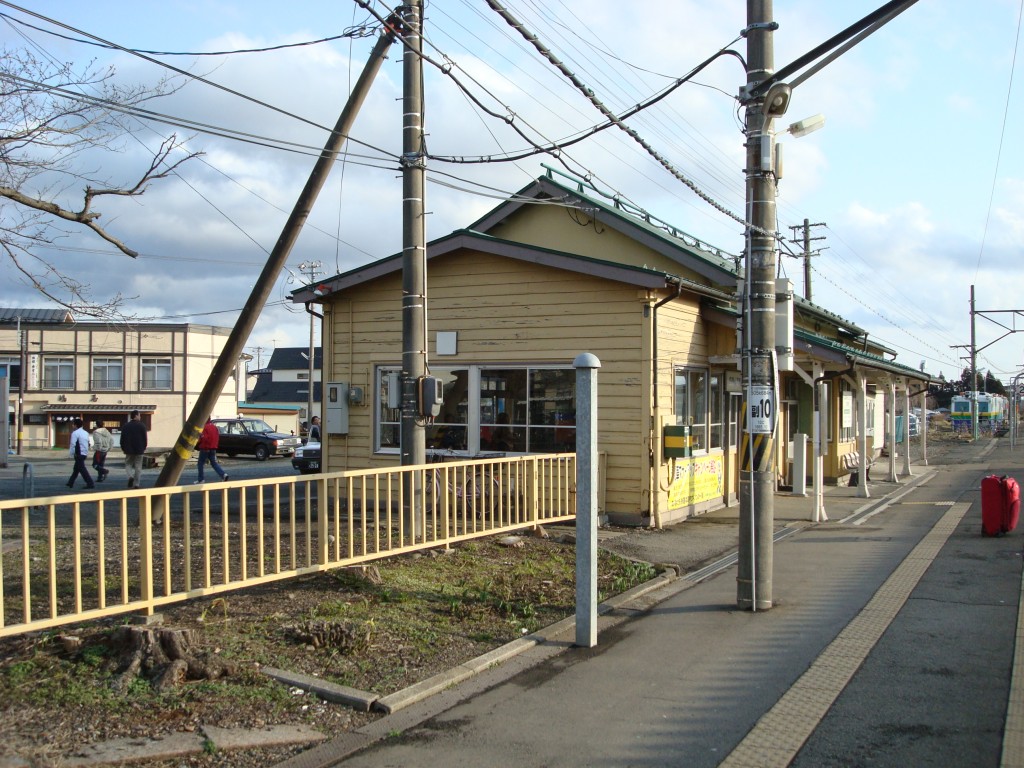mytest






![]()

UPDATES ON TWITTER: arudoudebito
DEBITO.ORG PODCASTS now on iTunes, subscribe free
Hi Blog. Had an interesting experience yesterday on the way home to Sapporo yesterday, so I thought I’d make that today’s blog entry.
We’ve had some media buzz last month about Japan’s regional airports (with the opening of Ibaraki’s airport, that makes a total of 98 international, national, and municipal airports around Japan — close to two per prefecture, and that apparently does not count the ones inside of JSDF military bases). A full list of them here. The buzz from the Japan Times, Editorial, March 23, 2010:
EDITORIAL
When airports eat each other
Japan has 98 airports. The transport ministry’s recent survey of 72 of them indicates that the economic viability of many airports is low. Unless local governments and concerned businesses make serious efforts to attract more passengers, some airports may be forced to close.The survey compared the actual number of passengers who used the 72 airports in fiscal 2008 with passenger-number forecasts. The actual number exceeded the forecast at only eight airports — Naha, Kumamoto, Nagasaki, Okayama, Nagoya, Haneda, Shonai (Yamagata Prefecture) and Asahikawa (Hokkaido). At about half of the 72 airports, actual use was less than 50 percent of what was forecast.
On March 11, Ibaraki airport opened as the nation’s 98th airport. Some ¥22 billion was spent to build the airport, which has a 2,700-meter runway. The chance of the actual passenger total of the airport exceeding the forecast amount is almost nil, as it connects only to Seoul, with one round-trip service a day. From April 16, it will also offer a once-daily round-trip service to Kobe.
Major airlines have shied away from Ibaraki, fearing a lack of passengers. The airport, about 80 km from Tokyo, is touted as the third for the capital, but access to it is hardly convenient.
Rest of the article at http://search.japantimes.co.jp/cgi-bin/ed20100323a1.html
I personally have used a lot of Japan’s airports on my domestic travels, usually for business: Sapporo Chitose, Sapporo Okadama, Hakodate, Misawa, Akita, Higashine Yamagata, Hanamaki Morioka, Niigata, Sendai, Chubu Nagoya, Mihara Hiroshima, Izumo Shimane, Fukuoka, Kitakyushu, the former Kokura Fukuoka, Oita, Kagoshima, Miyazaki, Naha Okinawa, and of course Itami, KIX, Narita and Haneda. I also will state that I have no problem with regional airports being built as long as they are used. As the Japan Times editorial mentions above, if access is convenient.
However, I thought Hanamaki Morioka defied that assumption pretty badly yesterday, so let me narrate the adventure:
As regular Debito.org readers know, I have been on a two-week tour of Tokyo and environs doing UN and NGO FRANCA stuff. But as my JAL mileage seems to accumulate less and less every year, I found that I could only get as far as Hanamaki Airport this year (the next band of free return flights starts at Sendai and stretches to Osaka, I was about 2000 miles short). So I made arrangements to meet friends in Morioka, gave a speech in Sendai, and did my business further south. Fine. The problem was I had to get back up to Hanamaki from Tokyo to go home (no problem again, I thought; my flight back was from 6:10PM), and that’s at least 3 hours from Tokyo (it still worked out cheaper than a RT flight to Haneda, and I can spend time productively watching episodes of Survivor on my iPod).
Here’s where it got interesting. I bought my ticket via JR all the way from Tokyo to “JR Hanamaki Kuukou Eki”, logically thinking that a JR station with the name of the destination would actually take me to that destination. I got a print-out from JR Tokyo: get off at Shinkansen Eki Shin-Hanamaki, change trains for JR Hanamaki Station, and finally arrive at JR Hanamaki Kuukou Eki.
It wasn’t to be. I arrived at Shin-Hanamaki only to find the stationmaster advising me to get a cab from there to the airport. I said I had a ticket all the way to Hanamaki Airport Station but he still made the same recommendation. I asked for a refund of the remaining two-station portion but he refused to give it. So I followed my ticket to see where it would take me. It took me outside, a five-minute walk, to a completely separate teeny station that was JR Shin-Hanamaki regular-train station.
With changes, it took me another half hour to get to JR Hanamaki Station, where I changed to another station which after another twenty minutes or so got me to the Holy Land.
But JR “Hanamaki Airport Station” was a tiny place, where even the office was closed despite arriving a little after 4PM. It was 4kms from the airport, a sign said. As was advised, no way to get there but again by cab.
Here are some pictures to illustrate how idiotic the situation is (click on any photo to expand in browser):
Caption: This is a JR station servicing an international airport?
Caption: Yes it is.
Caption: Note the distance to the airport: 4kms. Used to be two. Still, this JR station was never connected to the airport, is the point.
Caption: Station office is closed. Note time on clock. You have to hand in your ticket into a little mailbox as you enter the station doors. Honor system.
Caption: Business is done for the day. Nice to have bureaucrats go home so early. If they even come to work here at all.
On the way to the airport, I talked to the cabdriver about this situation. He said that Hanamaki Airport was indeed four kms away, and 5 kms from JR Hanamaki Station. It was in fact 6 kms from Shin-Hanamaki Station, meaning I had just gone one great ellipse to get to the airport. “JR Hanamaki Airport Station is the closest to the airport, therefore it became the station.” But it’s still only accessible by taxi. “Or bus. From Morioka Station.” Which was the way I went when arriving from Sapporo two weeks ago, but it’s a half-hour bus ride away.
The taxi driver continued, “The JR station used to be only two kms away, not the four that it is now. But they decided to spend even more money to build another terminal closer to the auto expressway.” Even though they have cars so they don’t have that much farther to drive, while we foot travelers have to shell out for a taxi? “Yep. It’s good for us taxi drivers.”
All told, I wasted close to an hour between arriving by shinkansen and arriving at the airport; good thing I allowed enough time to get there. I was also 1240 yen cab ride poorer for the experience, but sometimes one has to pay to get interesting blog entries.
But what kind of a government and infrastructure builds an airport, and then makes it nearly impossible for basic public transport to service it? Even dupes the consumer into believing the JR station goes to the airport?
“Ozawa and his porkbarrel,” said the cabdriver.
This is why the regional airports attracted so much controversy last month. And why, every now and again, we get annoyed articles about bureaucrats building public buildings, staffing them with retired bureaucrats, then making it as complicated or expensive as possible for the public to actually use them.
As we should. Guess what airport I won’t be using again. Thanks for the memories, Hanamaki. Arudou Debito back in Sapporo.





10 comments on “Sunday Tangent: Japanese porkbarrel airports as “infrastructure in a vacuum”, and how JR duped me into buying a train ticket to nowhere”
Debito, As if by some weird coincidence, I am rereading Alex Kerr’s “Dogs and Demons” and I just laughed out loud when I saw this post. Combine the worst of unelected decision-making pen-pushers with access to almost unlimited cash, corrupt local politicians who want prestigious projects for their districts (and the 3% kickbacks expected), and a concrete-driven public-works oriented regional economies, and that’s what we end up with, “Airports for Radishes”, along with bridges and tunnels to nowhere! Hilarious if it wasn’t so tragic!
Nothing they do in Hanamaki makes any sense. My parents in law live there so I have explored the area quite a bit and they have several most beautiful and traditional onsen and festival and nothing is done to make them accessible for tourists. But this is the same City Hall that told me that I couldn’t get married to my wife even though I had all the required documents. “Can’t be done,” was their answer (I’m sure it was another case of 面倒臭い). We had to go to the City Hall in Morioka to get a paper telling the Hanamaki City Hall the procedures to follow. 🙂
I’ve yet to read Dogs and Demons, but the theme struck a chord with me.
The relentless and often redundant concreting of vast stretches of Japan symbolizes the ugliness of these pork barrel projects.
The worst example for me has been the fact that over the last decade the whole Sea of Japan (or East Sea?) coast has been thoroughly concreted over, spoiling hundreds of little coves and idyllic spots all along the sea front from Niigata up to Sakata and beyond. In the late 90s my wife (then girlfriend) and I took a cheap busman’s holiday up the coast just exploring up there along the Uetsu line- we spent a week hopping up the coast into Yamagata Prefecture, turning up at local minshuku and onsen hotels to see if they had a room for a night. It was just GREAT! (Lovely people, food out of this world- fresh off the boat).
We went back in 2003 and the whole coast was a huge construction site, tens of kilometers of building works. The parts already done had built huge ugly concrete blankets that had ruined the natural beauty of the coast. Aesthetically it was ugly and bland, and was it really needed? As we went up the coast, we’d see, especially in Niigata, brand spanking new dual carriageways with elaborate elevated sections going to nowhere, you know, with a single farm van ambling along at 50 km….not another vehicle in sight.
OK, I am sure that there were counter arguments about sea defenses, rising sea levels, building an anshin and anzen safety society for the kokumin, etc. But I am reasonably sure there could have been more productive ways to have the money spent.
Yes, Kerr’s Dogs & Demons is full of examples like this. What a waste of taxpayers’ money.
A lot of the regions are struggling economically in Japan, and it’s no wonder why when you see this kind of nonsense.
Again this type of situation is directly a result of an “economic stimulus” policy. The belief that creating jobs and spending money into an economy will create prosperity even when it means building infrastructure that in some point in the future will have to 倒産する, but before that is allowed to happen more and more tax payers will have to see their money enrich the owners of the doomed ventures. So basically the philosophy is “why not build an airport, the government will subsidize us”. But I digress, funny story though.
Again this type of situation is directly a result of an “economic stimulus” policy.
I would say this far predates the idea of “economic stimulus”. It feels more like a result of over-taxation resulting in a surplus of funds which then have to be spent on something in order to justify the over-taxation. If it gives the nests of the “great and the good” a nice feathery lining in the process, well that’s just gravy!
Bear in mind that, coincidentally, the directors of many/most of the companies building this stuff were previously the bureaucrats funelling money to similar projects; and those pen-pushers signing checks now have a construction company to run in the future…
I have often been critical of Japan’s spending on infrastucture, especially when it seems pointless. I saw a lot of beautiful unused bridges when I lived in the countryside of Nagano, as well as signs to expressways that did not even exist at the time.
However, after 2 weeks of recent driving around on the East Coast of the US, I can say I really appreciate the fact Japanese potholes are few and far between. In the States, roads without potholes are few and far between.
— There’s a difference between road building and road maintenance, no?
Hey Debito
They got you too!!! Do not worry you are not the only one. I did some work for Fujitsu up that way a couple of years ago and “enjoyed” the same experience. Your photos bring back memories (or nightmares) of trying to get home from that place.
Japan usually kicks butt in the transportation efficiency department…this is not a shining example!
Aw yes, Dogs and Demons. A good book! I have hired a few people from overseas and they have come to live in Japan. If I want to keep them around, I usually wait until they have been here 2 years minimum before giving them that book…as it can be a bit depressing and dispel those lovely misconceptions.
Thanks for the nice Tangent
Cheers
Hi Debito,
This is interesting, though too sad a reality check by you on Hanamaki ! When JT Editorial also mentions there are too many airports, I wonder what is really going on in the name of Regional Development. Perhaps, as I would like to put it, there simply should be less regions, 10 to be precise instead of current 47. This is what I wrote to JT in one of my letters. http://search.japantimes.co.jp/cgi-bin/rc20100328a1.html ! I am afraid that very few friends would like the straight-from-the-heart comment, but it’s true that in any country people need airports that dont become a burden, neither on the users directly nor on the Government or the tax-payers indirectly !